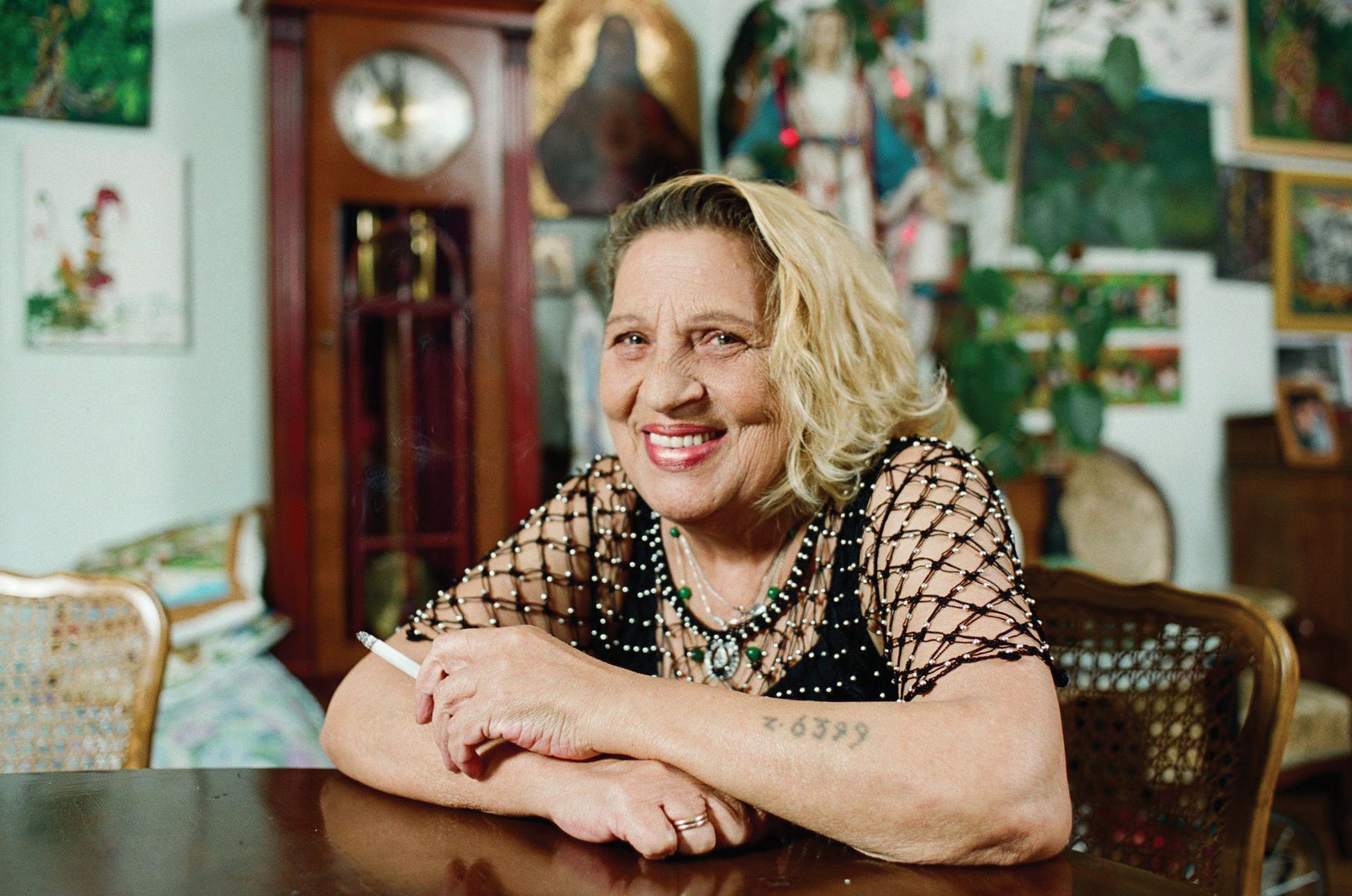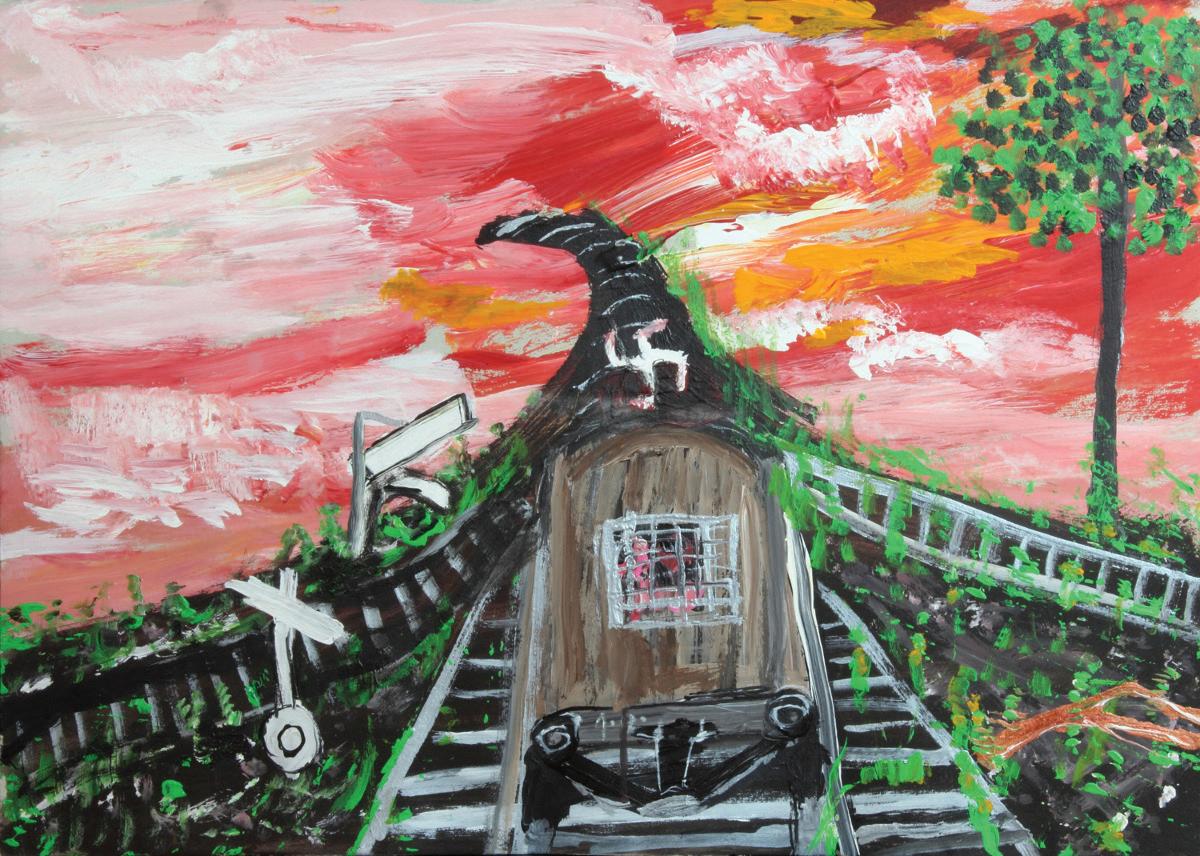
4 minute read
Ceija Stojka
A portrait on the woman who broke the silence
by Flora Lasinger
There are many identities Ceija Stojka is known for. The artist, the singer, the writer, the concentration camp survivor, the mother, the Romni –identities that are combined in one aspect: Ceija Stojka, the activist.
A woman who decided, after forty years of suffering in silence, to share her story with the world – to ensure that this would never happen again. To educate the youth and give voice to the lost souls that didn’t survive “Porajmos” (Roma Holocaust).
You are our protective overcoat, taking care that something terrible like that is not going to happen again.
These are the famous words Stojka said to end every workshop she held with Viennese pupils. More than 12,000 students had the opportunity to hear her story and form part of her most important mission. Hosting workshops that started in the 90ies and continued for years after her death.

Ceija Stojka was born in the Austrian countryside as part of the Lovara Roma. A group that made their living trading horses while living nomadically. In a family of eight, she grew up protected and loved until the tragic year of 1938, when Austria was annexed by Nazi Germany, and suddenly the rights of the Roma and Sinti were drastically restricted. Attending school and mixed marriages were forbidden, and in the years that followed, more and more Roma were deported to labor camps. The family had to stay in Vienna, at first legally, later in hiding until they were deported in 1943. Back then Ceija was 10 years old. Two years of suffering in the concentration and extermination camps Auschwitz-Birkenau and Ravensbrück followed until the liberation from Bergen-Belsen in 1945.
Those first happy childhood memories are represented in her artworks as “light pictures.” They convey a feeling of carefreeness. Portraying caravans, sunflowers, traditional Roma clothing, fields, and fair weather. The period 1943 – 1945 is depicted as the “dark pictures.” Ravens, weapons, soldiers, winter, barbed wire. Stojka had the unique talent of transferring a feeling in her paintings. Of describing what she endured and experienced with her expressive style in more than 1,000 paintings and drawings. Powerful artworks that have been exhibited all around the world.
After the war ended, the family (most of them had survived) tried to resume their normal lifestyle. Ceija Stojka gave birth to three children and made her living selling carpets – never telling her story. The only place she started sharing her experiences was in her notebooks. Notebooks full of drawings and paintings, not meant to be read by anybody else until a filmmaker, Karin Berger approached her in the mid80s and convinced her to publish her writings.
Since 1988, Ceija Stojka hasn’t stopped expressing her memories through art – songs, books, poetry, paintings, drawings – and educating especially young people about the horrific truths Roma and Sinti faced during the Second World War.
Nevertheless, Ceija Stojkas’s story is not about her pure survival. It’s about the life she created afterward. The happiness she found in her family and her work. The things she gave through her workshops. The vulnerability and honesty she displayed in order to fight for her community.
In the Nuremberg trials, the systematic persecution and murder of the Roma community wasn’t even mentioned. To this day, it is a fact often overlooked in Holocaust education. A reality that couldn’t be ignored by the victims, the survivors that had to carry the tattoos on their bodies and the images in their heads. Z 6399, forever tattooed on her forearm.

I’m afraid that Europe is forgetting its past, and that Auschwitz is only sleeping.
Ceija Stojka was the first European Romni to break the silence. To speak up and to tell the truth about the genocide. Through her encouragement, Austrian Roma and Romnija felt empowered to do the same. In 1993, the Roma community was finally recognized as an Austrian ethnic minority and her work continues to influence people to this day, 10 years after her death at 79 years of age.
Did you know?
Sometimes known as the “Forgotten Holocaust,” the Roma Genocide was excluded from the history of World War II for decades after the end of the war.











